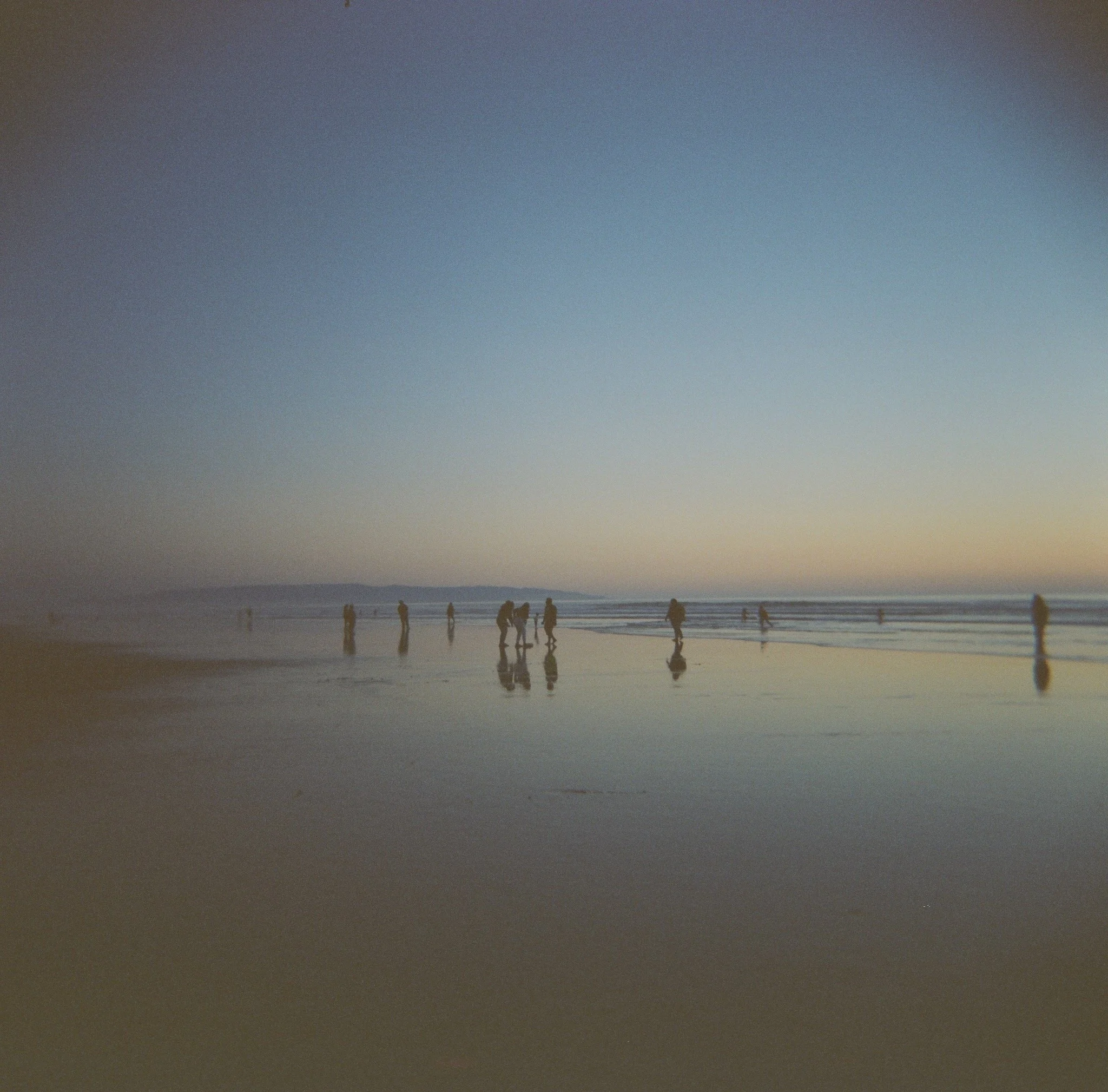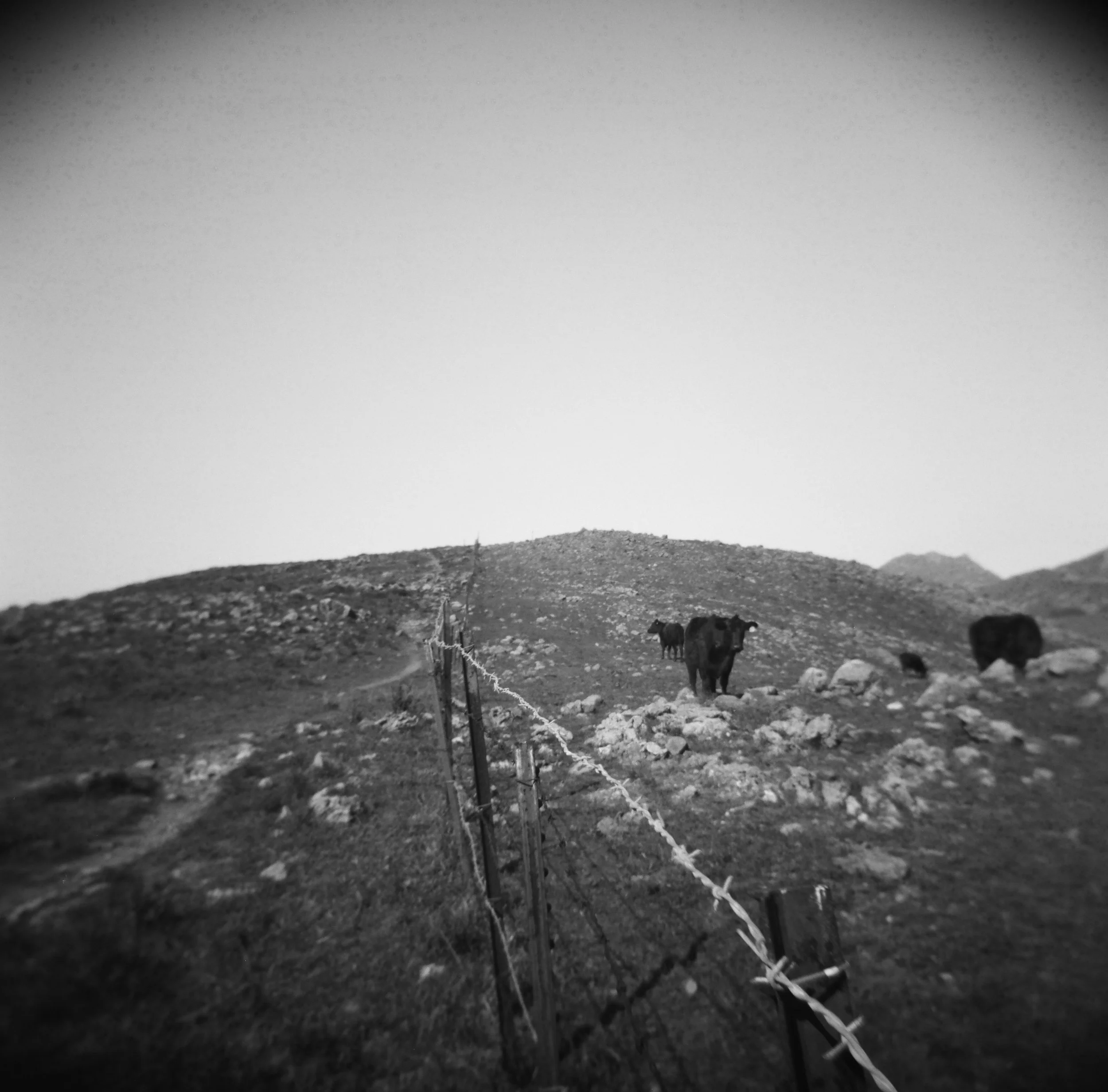Film
Pismo Beach, Holga, Cinestill 800T
When done right, film has an amazing rich, muted, and serene look. This is in part due to the film process being very limited. Film simply doesn’t have the sensitivity to light and color that a digital camera does. There is some flexibility when using different film stocks, but once you commit to a particular stock, you’re stuck with it for 12 to 36 images. Compare this to a digital camera where you can change every parameter with every shot.
Film is also expensive to shoot. A roll of Cinestill 800T 120mm is $20 per 12 image roll. It cost around $20 to get this roll developed. So every time the shutter clicks, $3.33 comes out of your wallet. But wait, it gets worse. Not all images are winners. I find I get 1-2 images per roll that I like. So it’s really like $20 per image. The same problem exists with digital cameras. In a typical photo shoot I’ll shoot 800 to 1000 images to get 100-150 that I like. The difference is that each shot with a digital camera is essentially free.
Post processing film is also quite a bit more difficult than digital. Tweaking begins during development and some edit can take place if the film scans are good enough. But due to the nature of film, there is often just not enough data in the image to make the edits that you can with a digital image.
While there are a lot of limitation to shooting film, most find that these limitations inspire creativity. Much more thought is put into which film stock to choose, which camera setting to use, and getting the composition perfect before clicking the shutter.
In this blog I’m sharing a few images a liked from two film cameras. A 32 year old Vivatar 35mm that my mom gave me in high school and a 2 year old Holga 120mm toy camera. The Holga is a very cheap camera ($35), but has a cult following. Each camera is unique and awful in its own way and I love that!
Booth at Madonna Inn, Vivatar 440pz, Cinestill 800T
Film expires. It’s usually at it’s peak for about 2 years after manufacturing. As the film ages, it loses it’s sensitivity to light. Without correcting for this, images will look darker and less colorful than new film. A friend gave me a bunch of rolls Fuji Superia and Kodak Gold that expired in the early 2000s. I shot these in my Vivatar that has no way to adjust shutter speed. The only way to sort of compensate for this was to push the film 1 stop in developing. Which I did and am happy with the style of these images.
Vivatar, very very very expired Fuji Superia 400, pushed 1 stop.
Vivatar, very very very expired Fuji Superia 400, pushed 1 stop.
I love shooting black and white and am a fan of Ilford HP5 Plus 400. Using this in the Holga results in these very contrasty images with all sorts of wonderful “defects”. Vignetting, light leaks, scratches, and dust.
Laguna Lake Open Space, Holga, Ilford HP5 Plus 400. No cows were impressed with the taking of this image.
One more film stock… For some crazy reason I bought a roll of Ilford Ortho 80 35mm. This film requires so much light that you pretty much need to shoot in broad day light at high noon on a very clear day. So I brought the Vivatar along on a hike, in the marine layer, at 10am, above Pirates cove. A few images came out OK. The one below was my favorite. The couple was also very friendly and offered me beer. Yeah, they got life figured out.
Bikers above Pirates Cove, Vivatar 440pz, Ilford Ortho 80
Drink of the week 🥃
Drink(s) of the week! Liquid Gravity asked me to shoot their “Welcome to California” can release party and brewer’s olympics🍻 The Welcome to California is the result of a collaboration between Liquid Gravity and four other California Breweries. This round included collabs with Humble Sea, Altamont Beer Works, Casa Agria Specialty Ales, and Burgeon Beer Company. This collab effort produces 4 epic IPAs!
The brewers from each brewery travelled to the release party to Liquid Gravity to take part in a panel discussion on how each beer was developed. More importantly they were there to compete in the first annual Brewer Olympics. I totally OSHA approve competition where the brewers would push themselves to the limits to demonstrate their command of the brewing process. Identifying hops, grinding grain, fixing hose leaking precious beer, and of course drinking beer! Check out the full gallery here.
What’s next?
This past week I did a photo shoot with a local artist and song write, Azere Wilson. Timing and weather were in our favor and the sunset shots came out beautifully. Azere is in the process of recording and album and It’s likely some of these shots will make the album art work! So holding off sharing pictures until the album debut.
I finally got Fuji’s RAW software to connect to my camera. Most image editing software uses the process on your laptop to perform the edits. Fuji RAW software is unique in that it uses the image process on the camera. This makes it much easier to develop and test film recipes. I’ve setup and tweaked a few recipes and looking forward to getting out and shooting over the next week.







